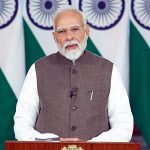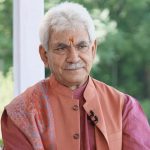DR. ZUBAIR AHMAD GANAIE & MARIJ ZAHOOR GANAIE
The issue of human rights has been at the helm of contemporary discussions, both in the legal as well as the spiritual fields. However, the confluence of human rights and health goes largely undiscussed. This is a pity, considering how integral a part the right to health is to the larger gamut of human rights. As per the Constitution of the World Health Organization (1946), “the enjoyment of the highest possible standard of physical and mental health is one of the fundamental rights of every human being without distinction of race, religion, political belief, economic or social condition”. This is just one aspect of the international legal framework of the right to health.
This tremendous and non-negotiable right finds further mention in the Universal Declaration of Human Rights (1948) as an essential part of both human rights and human dignity. Even further, The International Covenant on Economic, Social and Cultural Rights reiterates that the right to health is indeed a human right. In fact, every nation today has ratified at least one human rights treaty that recognizes the right to health (in addition to domestic policies), as per a fact sheet released by the Office of the United Nations High Commissioner for Human Rights and the World Health Organization. Thus, the right to health is not an obscure notion but a widely accepted one, supported by robust treaties and policies.
Having said that, the right to health is not to be seen as an isolated right. It encompasses and is constituted of the right to control one’s health and body (say, reproductive and sexual rights), the freedom from interference into one’s health (say, through forced medical experimentation or torture) and the right to avail a public health system, amongst others. Additionally, the multidimensional entitlement that is the right to health even encompasses the right to sound mental health. The direct consequence of it all is that the constituent rights themselves become fundamental rights, and the right to health becomes the spring that gives rise to various other multifaceted rights.
With the myriad facets of a dignified human life that the right to health encompasses, it becomes imperative to track the health indicators of populations, both to map progress (or regress) and to aid policy framing. The most widely used indices in this regard have been classified on two bases – what they measure and how they measure. On the basis of what they measure, indices in developing countries address morbidity, mortality and allied areas. On the other hand, indices in developed countries focus a lot more on lifestyle and behavioural habits, say diet, substance abuse, exercise etc.
The other basis of classification (how indices measure) yields two types of indices – ones that directly measure processes related to health like disease and death and ones that take note of indirect measures like education and poverty. The former are termed proximal indices and the latter are termed distal. The most frequently reported indices across the world include, inter alia, Infant Mortality Rate (IMR), Neonatal Mortality Rate (NMR), Maternal Mortality Ratio (MMR), Expanded Program for Immunization (EPI) coverage, nutritional status indicators and Healthy Life Expectancy (HALE) etc.
Even with a sturdy legal framework for guidance and a vigorous body of indices to track performance, all is not well in right-to-health-town. With domestic policymakers facing issues such as vaccine hesitancy, a population pre-occupied with superstitions that are detrimental to health and increasingly conservative public views towards reproductive and sexual rights, ensuring the right to health in its fullest connotation has become increasingly difficult. On the global scale, the major hindrances to a fully healthy global citizenry are the unwillingness of developed countries to share R&D and innovations with less developed countries, the inequity between men-women and the global south-global north in access to resources as well as the gross inadequacy of trans-national investment into public health. Unless these concerns are satisfactorily addressed, our shared vision of a truly healthy world will remain a distant dream.
Looking ahead, there remains a lot to be done in the realm of right to health, which ultimately will go a long way in ensuring integrated human rights. Foremost, the lack of adequate scholarship on the human rights perspective of health warrants for the academicians of the day to delve deeper into this subject. This scholarship will then form the base of a human rights-based approach to health-related policies, which is the surest way of ensuring health to all. Additionally, there is an urgent need to initiate on-the-field/door-to-door awareness campaigns in pockets where superstitious practices in opposition with scientific mandates prevail. The same should also be encouraged in areas where modern media of communication are unable to penetrate or are not allowed to penetrate. With these approaches leading the way, we shall tread that much closer to the highest possible standard of global health.
(Dr. Zubair Ahmad Ganaie is a Resident Doctor Internal Medicine at Holy Family, RCM Hospital. Email:[email protected]. And Marij Zahoor Ganaie is a Public Health student at GD Goenka University Gurugram. Email: [email protected])








